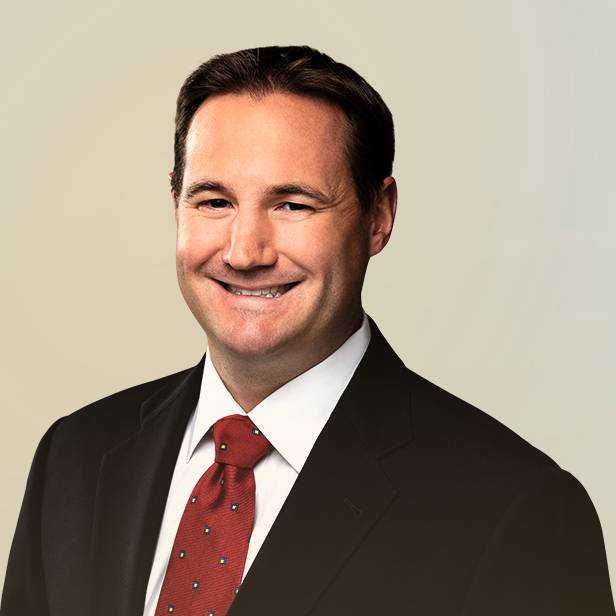Pitchbook | Q&A: Identifying the Non-Cyclical Sectors Most Resistant to a Potential Recession
Dec 2019
Original post from Pitchbook on December 5, 2019 here. ![]()
As 2019 winds down, there is much uncertainty across both economies and markets worldwide as to what 2020 may bring, given a bewildering swirl of contradictory macroeconomic indicators, political disputes and more. One of the most hotly discussed topics is the potential for a recession, with the memory of the Great Recession still painfully fresh in the minds of many. In this wide-ranging Q&A, Lincoln International industry experts sat down with us to identify the key traits that unify businesses that are best positioned to handle any coming turbulence, as the only thing that can be certain for businesses and investors alike is that change is coming.
As we look ahead at 2020, what strategies can private equity (PE) firms leverage to perform well, even if the boom cycle comes to an end?
Brad Keyworth: We are seeing PE firms proactively seek platform investments that are serving recession-resilient end markets and/or add-ons to their existing platforms that can limit the cyclicality of their existing business by providing or increasing exposure to those attractive, acyclical end markets. In doing so, all else being equal, the gap in valuations between companies serving recession-resilient end markets versus those that are in more cyclical end markets is widening. Beyond capital allocation, in the event of a downturn, PE fund managers can focus on the levers within companies that they own, or are evaluating, to understand where they can take costs out.
 |
…the gap in valuations between companies serving recession-resilient end markets versus those that are in more cyclical end markets is widening. | Brad Keyworth |
Michael Siano: PE firms can focus on staying disciplined on value when considering new investments and continue to focus on high-quality businesses. Details of the company’s customer base, the stickiness of those relationships and the diversity of revenue are important and come into play during the diligence process.
Chris Stradling: Regardless of what sector your portfolio serves, it would be prudent to invest now in a good infrastructure to serve the high-growth areas. For example, in a slowing economy, home and houseware sales overall may flatten or even decline, but if a company is well equipped to sell through e-commerce channels, they will perform measurably better than the overall market in a downturn. Or a company supplying automotive parts or services may invest in its aftermarket expertise now as that is where there will be growth if new car sales were to slow. Most business leaders have a good instinct for where the growth areas for their specific industry will be in a downturn, but fewer execute and invest sufficiently to be best positioned when the slowdown occurs.
Given the broader macroeconomic and market backdrop, many dealmakers and service providers are looking to identify which businesses could exhibit (or are already exhibiting) the most recession resilience. Can you describe what you’re seeing in your respective sectors that indicate that an economic slowdown won’t slow M&A activity?
Brad: The Great Recession was unique in the number of sectors of the economy that fell into a recession as well as its magnitude. We, and many economists that I have read, don’t expect any future economic slowdown to be as drastic in its impact and duration. One of the reasons is that the sectors of the economy are generally not as correlated as they were last time. We see that now, as certain sectors are already exhibiting the impact of a recession while others are performing strong. The same shows through in M&A activity. An example of this is distributors serving the automotive end market, where companies serving the automotive aftermarket are in high demand versus those serving the OEMs.
Michael: I think the healthcare IT (HCIT) sector is very recession resilient relative to most other sectors. Many of the technologies that are being employed by hospitals, physicians, patients and healthcare payors have become mission critical and are used every day to keep healthcare businesses running. It can be very difficult to live without those solutions. We are seeing continued interest from PE and strategic acquirers alike, focusing on businesses in HCIT with those types of characteristics. Also, many healthcare technology businesses take cost and complexity out of the healthcare system. When the economy turns, those cost-saving tools are still very much in demand.
 |
I think the healthcare IT (HCIT) sector is very recession resilient relative to most other sectors. | Michael Siano |
Chris: I’ll break this down into two/three key sectors. First, food and beverage generally does well during a recession, particularly private label or value products, because food is a non-discretionary product. Consumers spend money for food almost regardless of income level. Where individuals cannot afford food, most governments in developed nations have public programs that subsidize food purchases. Caloric intake generally increases in difficult times as food is a relatively inexpensive indulgence. Second, the automotive aftermarket is displaying very good trends and will continue to do so, even if the market slows down. Miles driven per year are rising while the age of the fleet of cars is also increasing. This means more repair, refurbishment and maintenance to keep the aging fleet on the road. Additionally, pet products and services exhibited resilience in the last downturn when consumers increased their spending on pets. This is generally attributed to consumers’ strong human need to care for someone or something, an instinct that increases in times of perceived scarcity. Interestingly, this was also true with premium pet products. Lastly, while e-commerce cuts across most product sectors, it will continue to grow in a down economy.
 |
While e-commerce cuts across most product sectors, it will continue to grow in a down economy. | Chris Stradling |
Are there bright spots within your respective sectors that are particularly attractive to investors in a downturn?
Michael: HCIT companies that help increase efficiency overall will continue to be in high demand. For example, on the cost side, software or tech-enabled services businesses that streamline operations and reduce the cost of care delivery are important. While software and writing code are not core competencies in pharmaceuticals and life sciences, they are increasingly buying outside data/analytics, software or tech-enabled services that assist with R&D, commercialization or sales and marketing. Another interesting area is on-demand healthcare services, such as telehealth. While still in the early innings of adoption, telehealth increases access to care for patients and is often a lower-cost alternative.
Brad: End markets that have proven to be recession resistant tend to dominate these bright spots. This includes industries such as the automotive aftermarket, building products (repair- and remodel-driven), consumer non-discretionary, food, foodservice disposables, healthcare and janitorial/sanitation products. Investors continue to like subsectors that may not be recession resistant, but have a less cyclical profile, such as industrial distribution, and subsectors that are exhibiting secular growth tied to emerging technologies, such as industrial automation.
A record level of consumer spending (estimated at 68% of the U.S. economy in Q3) has been fueling the economy. Consumer spending often takes a hit as market jitters rise, as we have already seen in China this year. How do you anticipate that consumer confidence may impact each of your sectors?
Chris: There is definitely a direct relationship between consumer confidence and consumer spending. Discretionary products like luxury goods take the biggest hit, while necessary purchases are much less impacted.
 |
There is definitely a direct relationship between consumer confidence and consumer spending. | Chris Stradling |
Michael: Healthcare reform and the advent of value-based care in the U.S. has led to the patient increasingly bearing more of the financial burden for healthcare costs. So, while I still think healthcare is recession resilient, there may be a little more sensitivity in a downturn around healthcare, for example, non-life-threatening elective procedures, today than there was years ago.
Brad: On the consumer side, many of the distributors serve sectors that are insulated from consumer confidence because they focus on categories such as food/grocery, foodservice, janitorial/sanitation and consumer non-discretionary, in which case a material change in consumer spending would have little to no impact. However, there are certain sectors that are impacted by material changes in consumer confidence because they are discretionary in nature. Tariffs have created significant noise this year despite having varying impacts on financial performance for distributors, with some having no effect because certain distributors were able to push the tariffs on to their suppliers or pass them along through the supply chain.
With differences in population demographics, as well as privatization of healthcare by geography, are there particular geographic markets where you expect to see more healthcare dollars flow, even in a downturn? Likewise, in distribution and consumer are there geographic areas where you expect more or less investment?
Michael: Demographics is one of the massive tailwinds in healthcare today. Its staggering to consider that roughly 10,000 Americans per day age into Medicare. The aging of America and the scale of healthcare services needed to support that tectonic shift in demographics is a hot topic. Over time, and likely due in part to that shift, there has been a trend for patients to move towards lower-cost care settings. While this isn’t a new trend, it is one we expect to see continue over time. For example, home health has seen significant growth and telehealth, remote patient monitoring and other healthcare technologies have made staying at home instead of moving to a costly healthcare facility more favorable.
 |
Demographics is one of the massive tailwinds in healthcare today. | Michael Siano |
Brad: We expect capital to flow within the US for distribution businesses, as the end markets are generally large and fragmented. We anticipate that there will be continued consolidation within the US across sectors as companies grow and seek to leverage the benefits of that scale, particularly in sectors that have regional distribution models where a buy-and-build model can be very effective. Further, we expect foreign capital to continue to find its way to the US, as foreign buyers seek to establish a presence or to increase their penetration of the US market because of its attractive size and growth profile.
Chris: Asia, and particularly China and India, have rapidly expanding middle classes with enormous buying power. Even with the current economic issues in China driven by trade negotiations, there remains significant growth in consumer spending there. Companies and brands with developed strategies in Asia will benefit from these strong demographic trends and will also be more diversified against localized economic downturns.
Tying it all together, what are the key traits that businesses in these recession-resistant segments exhibit? How can dealmakers more easily identify or tease out these commonalities?
Brad: First, one must focus on the end markets, with the key factor being the discovery of recession-resistant models because of either attractive end markets that have limited cyclicality risk or diverse end markets that are not correlated in their respective cycles. Second, investors should examine the business model to understand the criticality of the company to the supply chain through the value proposition that it offers both its suppliers and customers. The most valuable distributors are fundamentally service companies that have products that run through the business model. Thinking about distributors in this framework makes them indispensable to the supply chain and its partners on both sides, which minimizes any risk of disintermediation, especially during an economic downturn. Understanding the strength of the value proposition can be demonstrated through a company’s gross profit margins and return on invested capital, which can vary by sector, so it’s important to benchmark them against their peers.
 |
Understanding the strength of the value proposition can be demonstrated through a company’s gross profit margins and return on invested capital…so it’s important to benchmark them against their peers. | Brad Keyworth |
Michael: How sticky or mission critical a healthcare technology is to its end user (be it a provider, payor, patient or other) will be one of the most important considerations. Is it easily replaced and what are the replacement costs? Does the business have customer concentration? If you can answer those questions and similar with sufficient confidence, then you have a firm baseline with which to move forward.
Chris: Two traits come to mind when seeking to identify recession resistant investment opportunities. First, companies with products that are both consumable and non-discretionary. These can include obvious products like food or less obvious products like smartphones, which we all highly depend on and which have limited lifespans. Second, companies that are heavily weighted toward a disruptive channel. The most apparent channel in this category is e-commerce, but other more traditional channels such as specialty retail have segments of higher growth.
Summary
-
Lincoln International looks at experiences that non-cyclical sectors within the Business Services, Consumer and Healthcare have in a changing market and the impact on investors.
- With the memory of the Great Recession, Lincoln identifies the key traits that unify businesses that are best positioned to handle any coming turbulence.
- Sign up to receive Lincoln's perspectives
Contributors
Meet our Senior Team

I am a rigorous advocate for my clients with a hands-on, communicative approach, focused on delivering intense advocacy and outlier results.
Sean Bennis
Managing Director & Co-head of Industrials
Chicago
I am enthusiastic about creating sustainable growth and the highest value for our clients and strive to leave a positive footprint beyond any successful M&A transaction.
Friedrich Bieselt
Managing Director & Head of Business Services, Europe
Frankfurt
I enjoy leading clients and realizing their objectives, while structuring solutions to issues that are both intriguing and challenging.
Øyvind Bjordal
Managing Director | Head of Switzerland
Zurich











